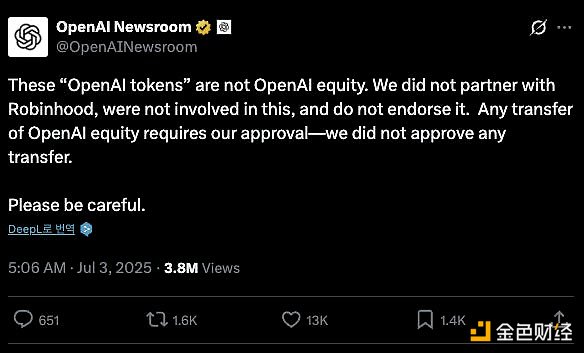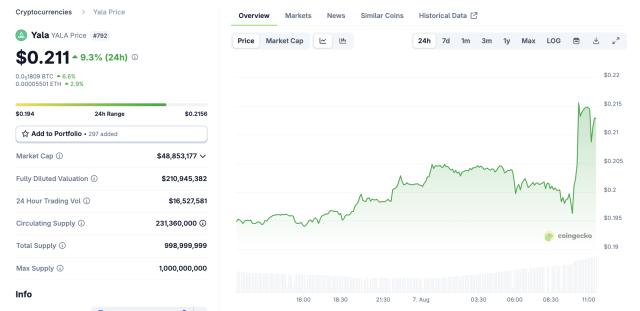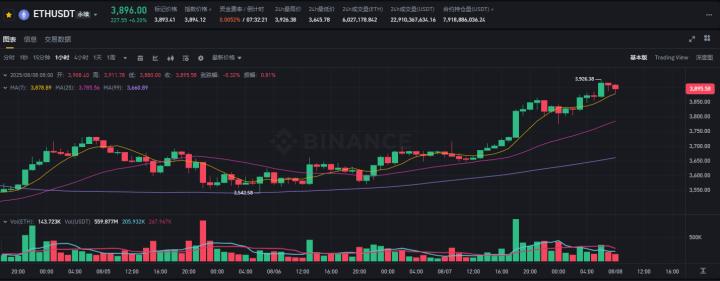Author: Ryan Yoon, Tiger Research Research Analyst; Translation: Jinse Finance xiaozou
Despite the lucrative returns of the private equity market, retail investors still find it difficult to enter, and this field remains the exclusive battlefield of institutional investors and high-net-worth individuals.
Tokenization technology promises to address the inherent limitations of the traditional financial system - particularly issues of low liquidity, high entry barriers, and complex operations - but significant legal and technical obstacles still exist.
Projects like Ventuals, Zoshi, and FreeStock are exploring different paths of private equity tokenization. Although still in the early stages, these attempts have demonstrated the potential to break down market structural barriers.
1. The Private Equity Temptation - But Not for You
How can ordinary people invest in SpaceX or OpenAI? As non-listed companies, they are off-limits to most investors. Retail investors have almost no access - investment opportunities typically only appear after an IPO.
The core issue is that you are excluded from the high returns created by the private market. Over the past 25 years, the value created in private markets has been approximately three times that of public markets.
Two structural factors are behind this. First, fundraising is a highly sensitive process for private enterprises. Regardless of investor qualifications, transactions are often limited to well-known institutional investors. Second, the growth of private capital markets has expanded financing channels. Today, many companies can raise billions of dollars without going public.
OpenAI is a prime example of these two trends. In October 2024, it raised $6.6 billion from major investors including Thrive Capital, Microsoft, NVIDIA, and SoftBank. By March 2025, it secured another $40 billion in financing led by SoftBank, with participation from Microsoft, Coatue, and Altimeter, setting a record for the largest private fundraising round.
This is a system limited to specific institutional investors, and the mature private capital infrastructure provides companies with alternatives to going public.
Therefore, today's investment landscape reveals increasingly severe exclusivity - exacerbating inequality in accessing high-growth opportunities.
2. Equal Participation - Can Tokenization Break Down Structural Barriers?
Can tokenization technology truly address the structural inequality in the private equity market?
On the surface, this model is quite attractive: converting real-world assets into digital tokens, enabling fractional ownership and supporting 24/7 global market trading. But essentially, tokenization is merely repackaging existing assets like pre-IPO equity into a new form - solutions to improve participation have long existed within the traditional financial system.
[Image]
For example, platforms like Ustockplus by Dunamu in Korea, and Forge and EquityZen in the US, all allow retail investors to participate in non-listed stock trading within existing regulatory frameworks.
So, what is the differentiating value of tokenization?
The key difference lies in market structure. Traditional platforms use a peer-to-peer (P2P) matching model - buyers must respond to sellers' listings. Without counterparties, trades cannot be completed. This model suffers from liquidity constraints, limited price discovery, and uncertain execution times.
Tokenization technology can potentially overcome these structural limitations. If tokenized assets are listed on centralized (CEX) or decentralized (DEX) exchanges, liquidity pools or market makers can provide continuous counterparties, thereby enhancing trade execution and pricing efficiency. Beyond reducing friction, this approach will reshape market architecture.
Additionally, tokenization can enable innovative functions not supported by the traditional financial system. Smart contracts can automatically distribute dividends, execute conditional trades, or implement programmable governance rights. These functions have given birth to entirely new types of financial instruments - designed with both flexibility and transparency.
3. Pre-IPO Equity Tokenization Projects
[Image]
(1) Ventuals
[Image]
Ventuals is built on a perpetual contract structure, with its core advantage being the ability to trade derivatives without holding the underlying asset. This design allows the platform to quickly list various pre-IPO stocks, avoiding conventional regulatory requirements like identity verification or accredited investor certification.
The perpetual contract is implemented through Hyperliquid's HIP-3 standard, but this standard currently only runs on the testnet, and Ventuals is still in the pre-release stage.
Its pricing model also breaks convention: token prices are not based on stock prices or actual market trades, but calculated by dividing the company's total valuation by one billion. For example, if OpenAI is valued at $35 billion, each vOAI token would be priced at $350.
However, this low-barrier access comes with structural challenges - most notably, oracle dependency. Valuation data for non-listed companies is naturally opaque and updated with delay, and derivatives based on such incomplete information may exacerbate market information asymmetry.
(2) Jarsy
[Image]
Jarsy adopts a 1:1 asset-backed tokenization model. Its core mechanism is directly acquiring pre-IPO shares and issuing tokens at a 1:1 holding ratio. For example, if Jarsy holds 1,000 SpaceX shares, it will mint 1,000 JSPAX tokens. Investors do not directly own the underlying stocks but enjoy all related economic rights, including dividends and price appreciation gains.
[Image]
This model relies on Jarsy's operation as an asset management entity: the platform first measures market demand through token pre-sales, then pools funds to actually purchase shares. If the acquisition is successful, pre-sale tokens convert to official tokens; if it fails, funds are refunded. All assets are held by a Special Purpose Vehicle (SPV) and can be real-time verified through a reserve proof page.
The platform has significantly lowered the investment threshold to as low as $10. No qualification requirements are set for investors outside the US, substantially enhancing global accessibility. All transaction records and asset holdings are stored on-chain, ensuring auditability and transparency.
However, this model faces structural limitations. The most pressing issue is low liquidity - stemming from limited holdings for each company. For instance, Jarsy currently holds about $350,000 in X.AI, $490,000 in Circle, and $670,000 in SpaceX. In such shallow markets, even small sell orders from major holders can cause significant price fluctuations. Given the opaque and illiquid nature of private equity, price discovery is already difficult, which further amplifies volatility.
Moreover, while asset-backed tokenization provides stability, it sacrifices scalability. Each new token launch requires actual share acquisition - a process involving negotiations, regulatory coordination, and potential purchase delays, constraining the platform's ability to respond to rapidly changing market trends.
It's worth noting that Jarsy has been online for just over a year and is still in its early stages. As the user base and Assets Under Management (AUM) grow, liquidity issues may gradually ease. As the platform expands its scale, broader coverage, and deeper tokenized equity pool, a more stable and efficient market will naturally develop.
[Image]
(3) PreStocks
PreStocks adopts an operation model similar to Jarsy, acquiring non-listed company shares and issuing 1:1 backed tokens. The platform currently supports trading of 22 pre-IPO stocks and recently opened its product to the public.
[Image]
PreStocks, built on the Solana blockchain, enables trading through integration with Jupiter and Meteora. It provides 24/7 trading and instant settlement services without management fees or performance charges. Investment has no minimum threshold, and any Solana-compatible wallet user can participate, significantly lowering entry barriers.
However, specific restrictions exist: users from the United States and other major jurisdictions cannot use the platform. Although the platform claims all tokens are fully collateralized by underlying stocks, detailed holding verification documents remain unpublished. The team states they will regularly release third-party audit reports and offer paid single position verification services on demand.
Compared to Jarsy, PreStocks has tighter integration with decentralized exchanges (DEX), which might generate broader secondary application scenarios (such as token staking and lending). Within the Solana ecosystem, tokenized public equity (like xStock) has formed active use cases, and PreStocks may benefit from ecosystem-level synergy.
(4) Tokenized Pre-IPO Stocks Await Barrier Removal
The tokenized equity market has initially taken shape. Although platforms like Ventuals, Jarsy, and PreStocks demonstrate early development momentum, significant structural challenges remain.
The Primary Obstacle is Regulatory Uncertainty
Most jurisdictions still lack clear legal frameworks for tokenized securities. Therefore, many platforms operate in regulatory gray areas, maintaining operations through jurisdictional arbitrage without direct compliance.

Secondly, Resistance from Private Enterprises Remains a Critical Barrier
In June 2025, Robinhood announced tokenized exposure services for OpenAI and SpaceX for EU clients. OpenAI immediately issued a public opposition statement: "These tokens do not represent OpenAI equity, and we have no partnership with Robinhood."
This response highlights private enterprises' desire to control equity structure and investor management rights—a core function they vigilantly protect.
Third, Technical and Operational Complexity Cannot Be Ignored
Maintaining reliable associations between real assets and tokens, addressing cross-border compliance, handling tax implications, and implementing shareholder rights execution are not easy tasks. These issues could significantly constrain user experience and scale expansion.
Despite various limitations, market participants are actively seeking solutions. For instance, Robinhood, despite public criticism, still claims plans to expand tokenized assets to thousands by year-end. Platforms like Ventuals, Jarsy, and PreStocks continue to advance differentiated paths for equity access tokenization.
In summary, tokenization offers a viable path to improve private equity accessibility, but the field remains in its early stages. Current limitations exist, but the crypto domain's development history demonstrates that technological breakthroughs and rapid market adaptation can—and often will—redefine possibility boundaries.








